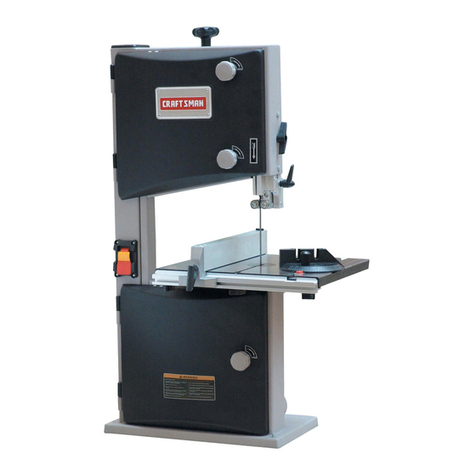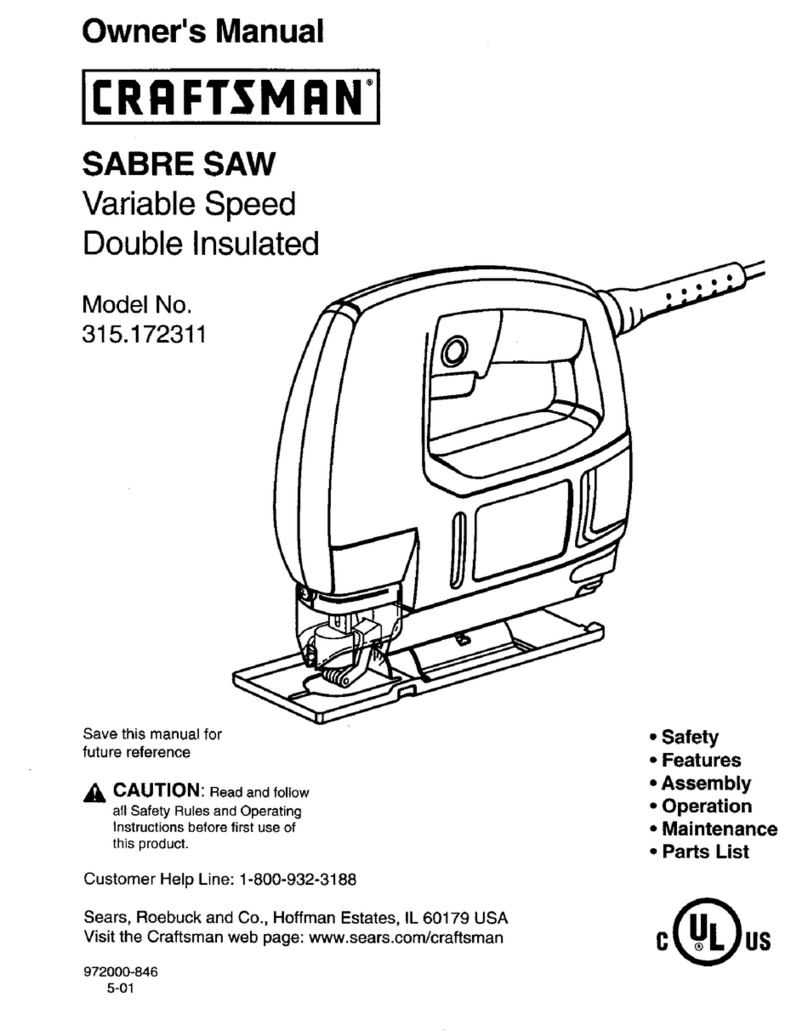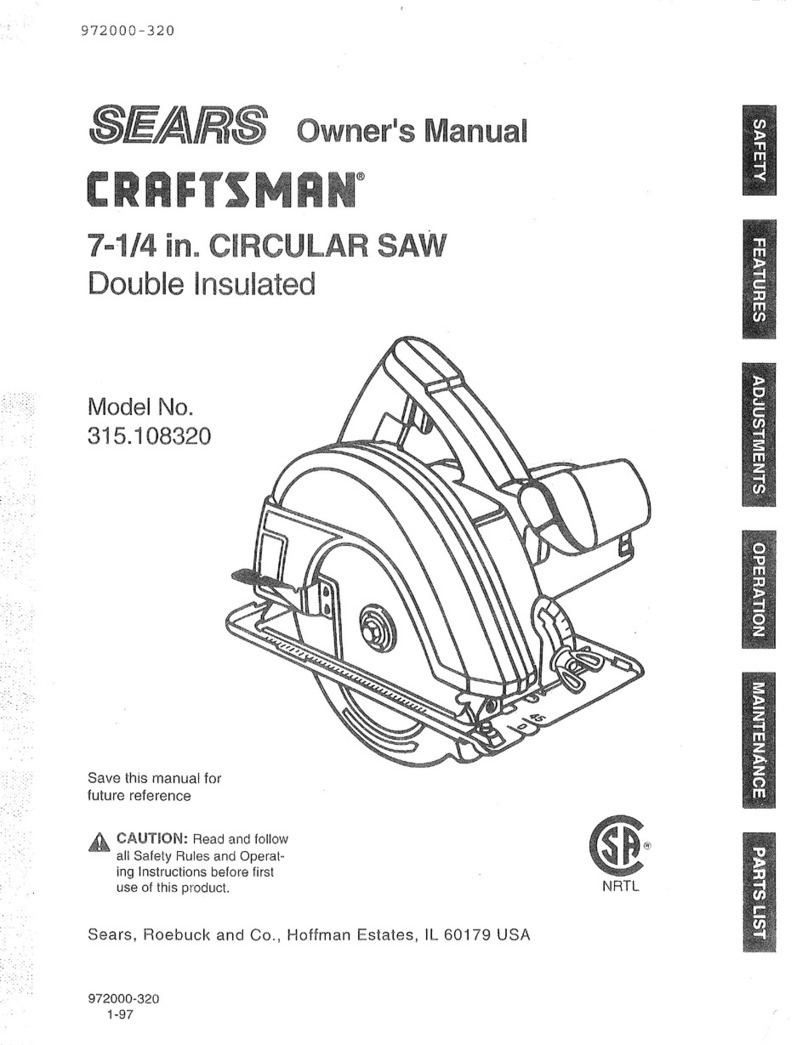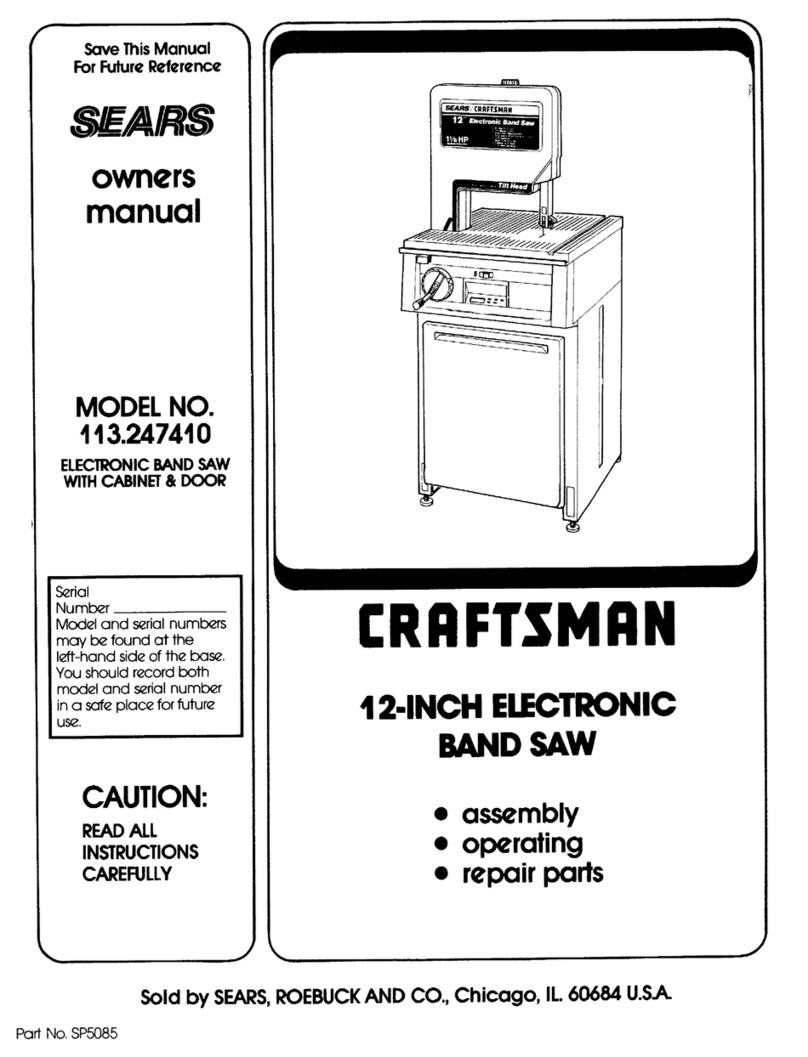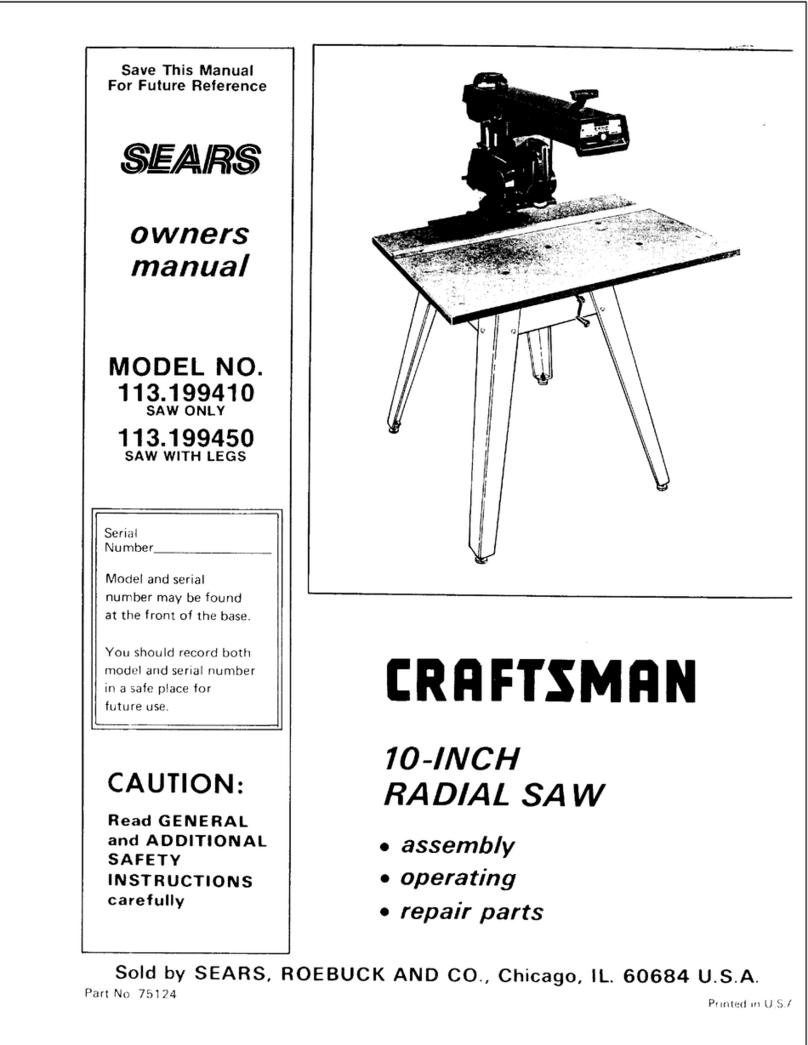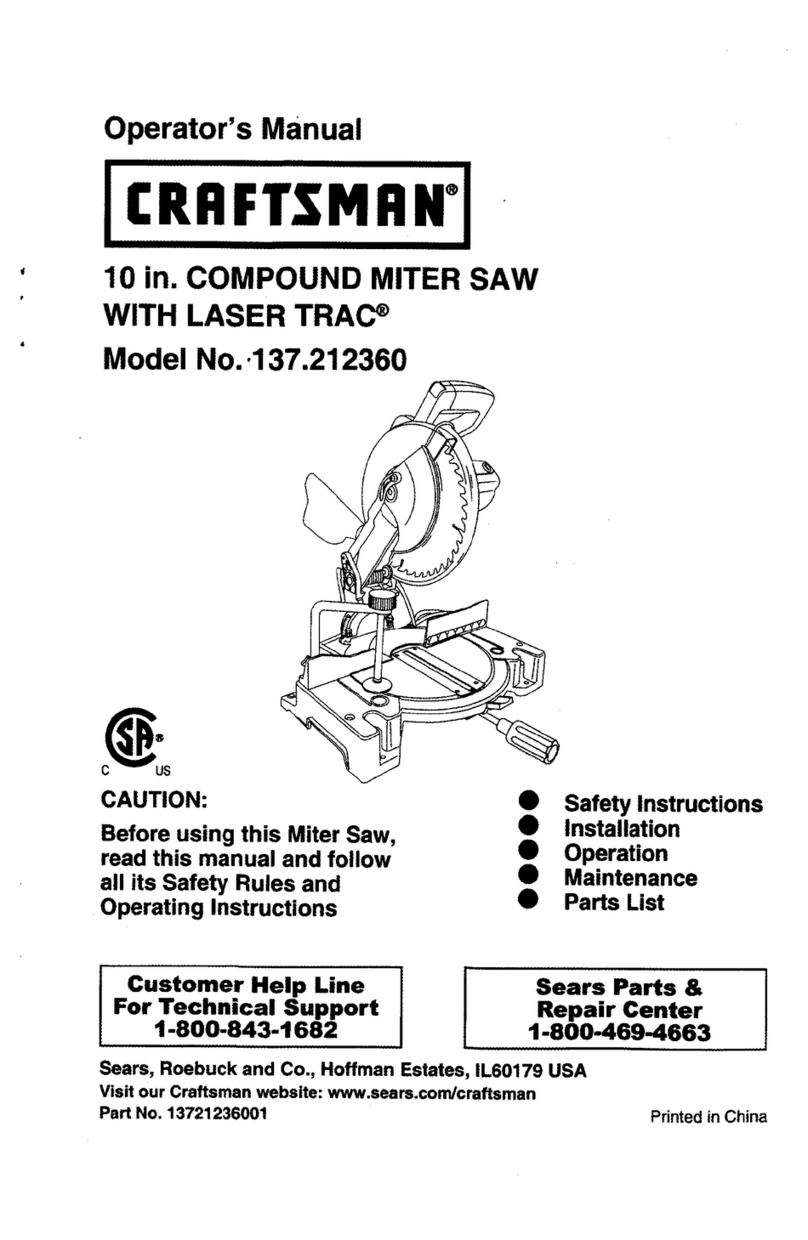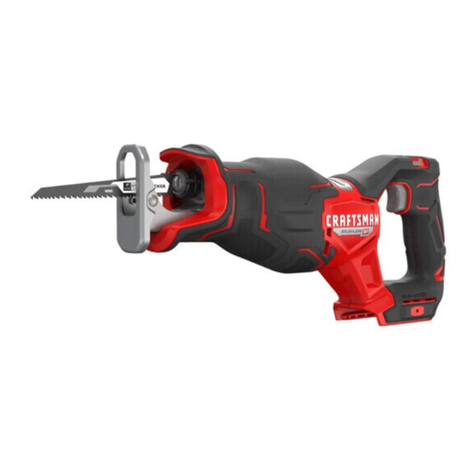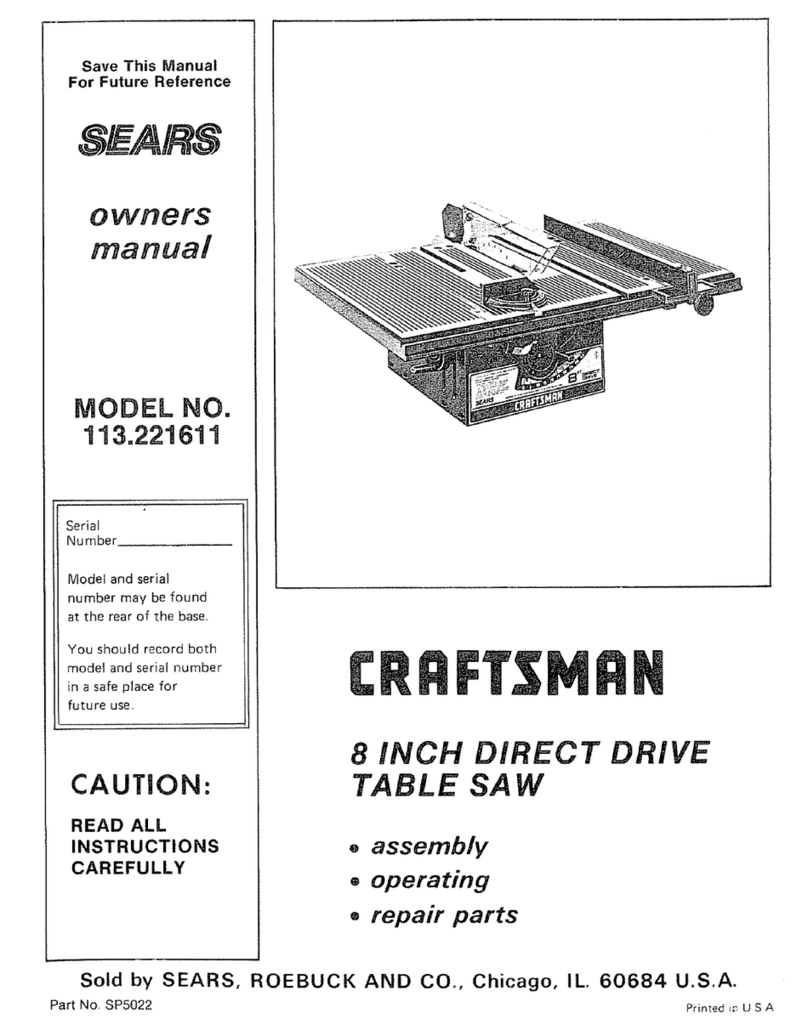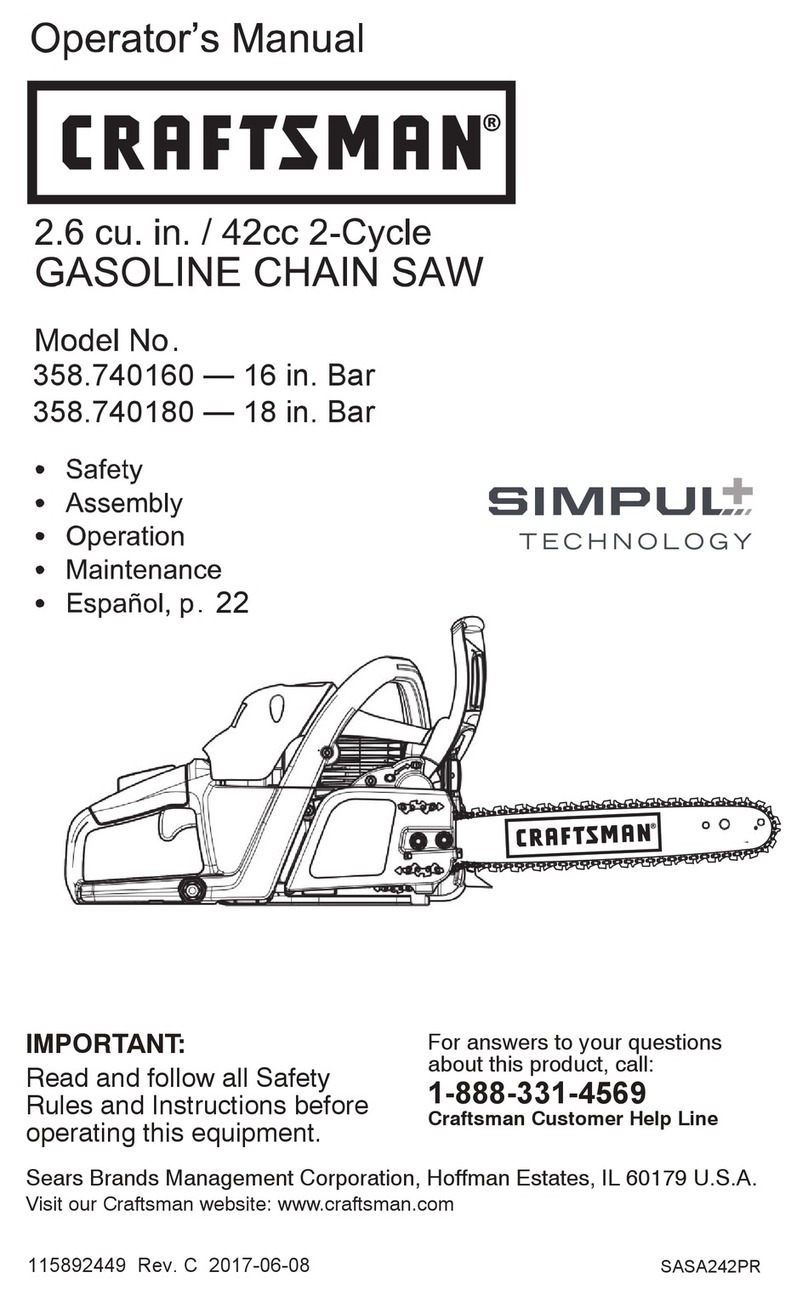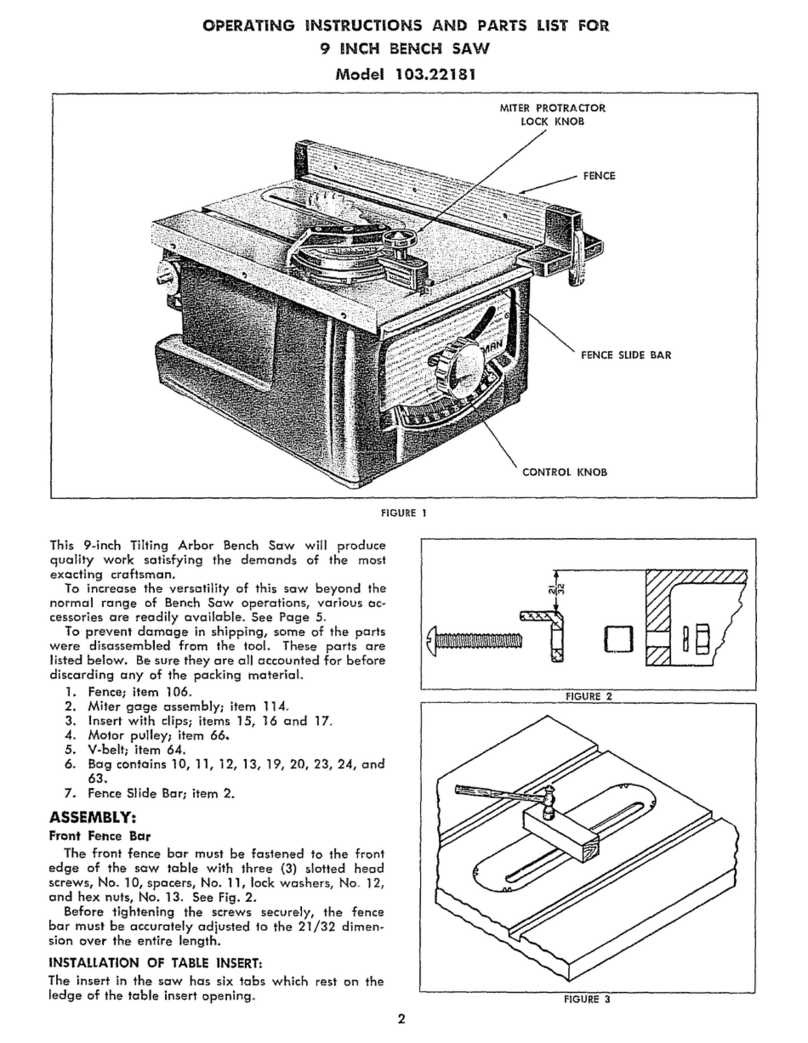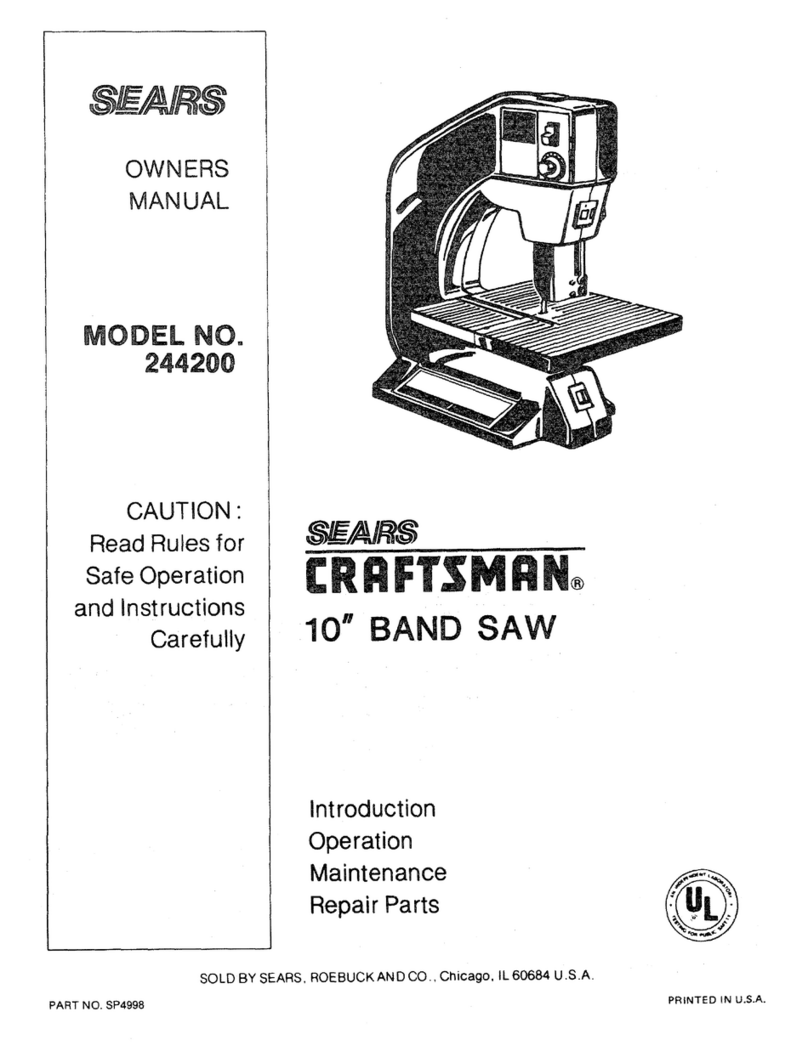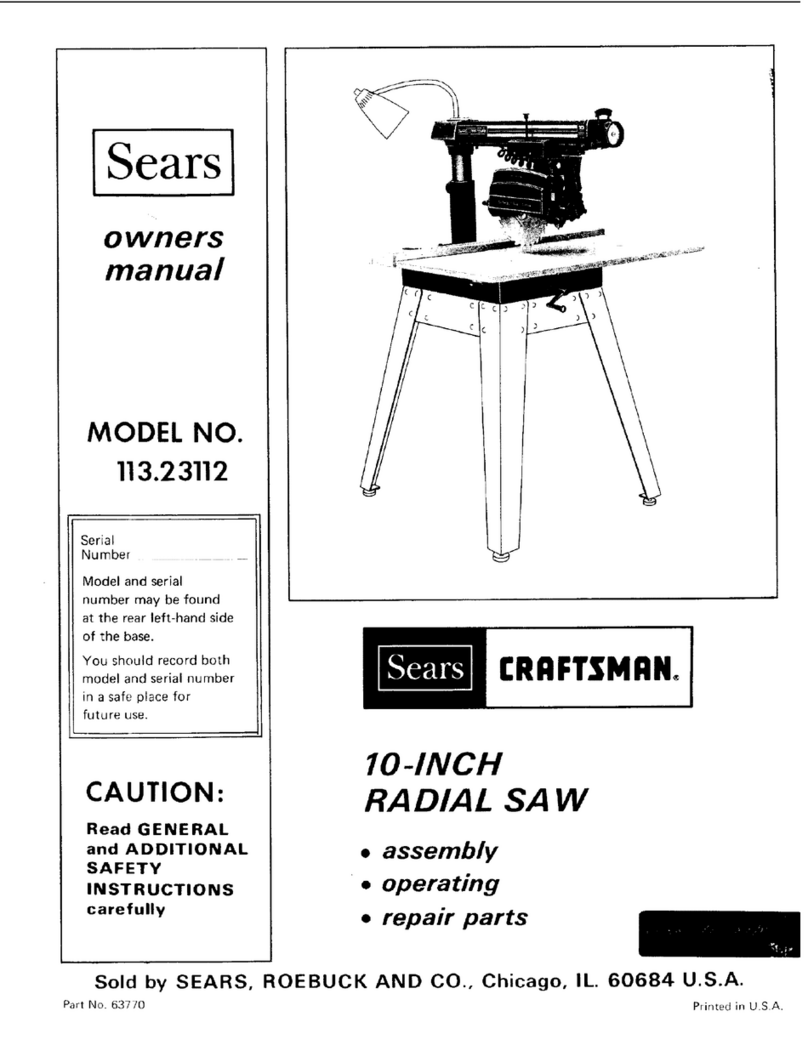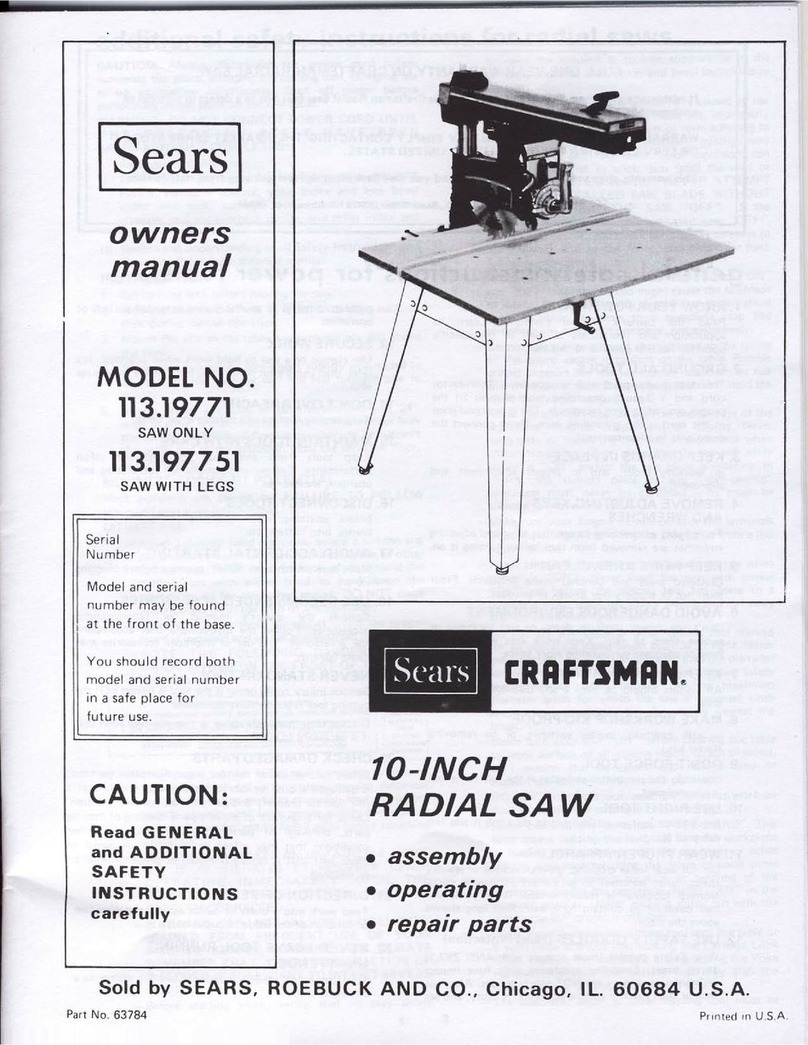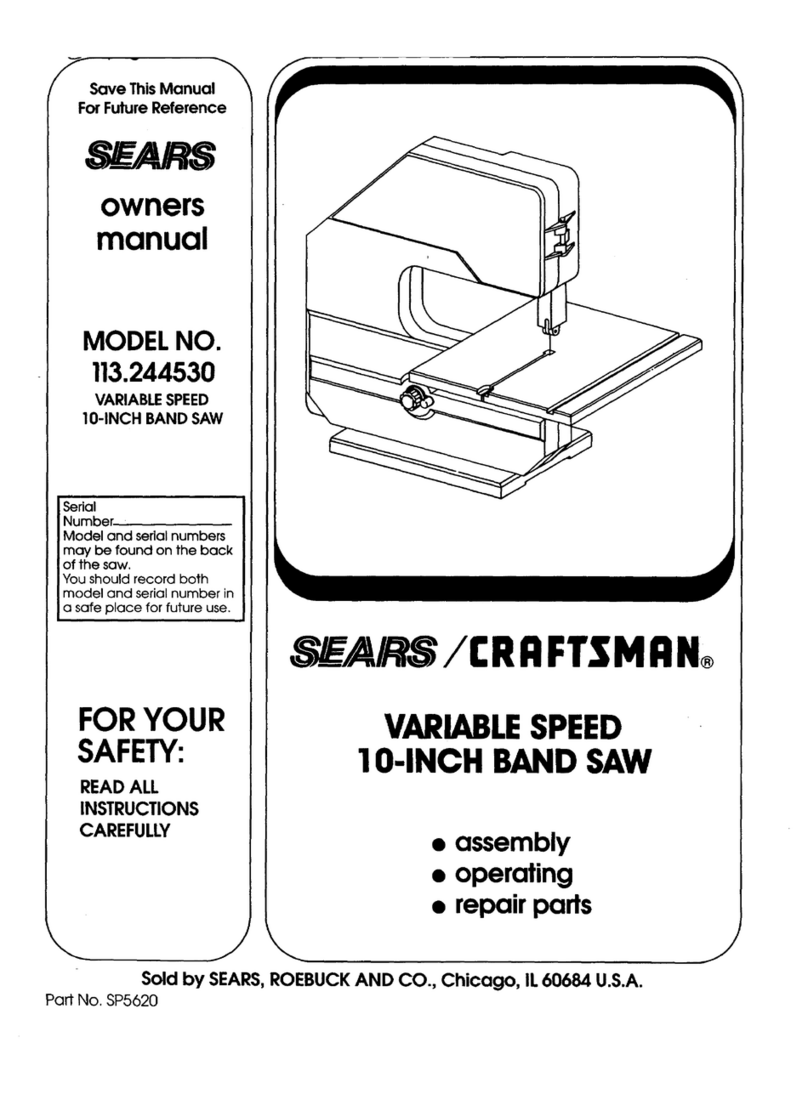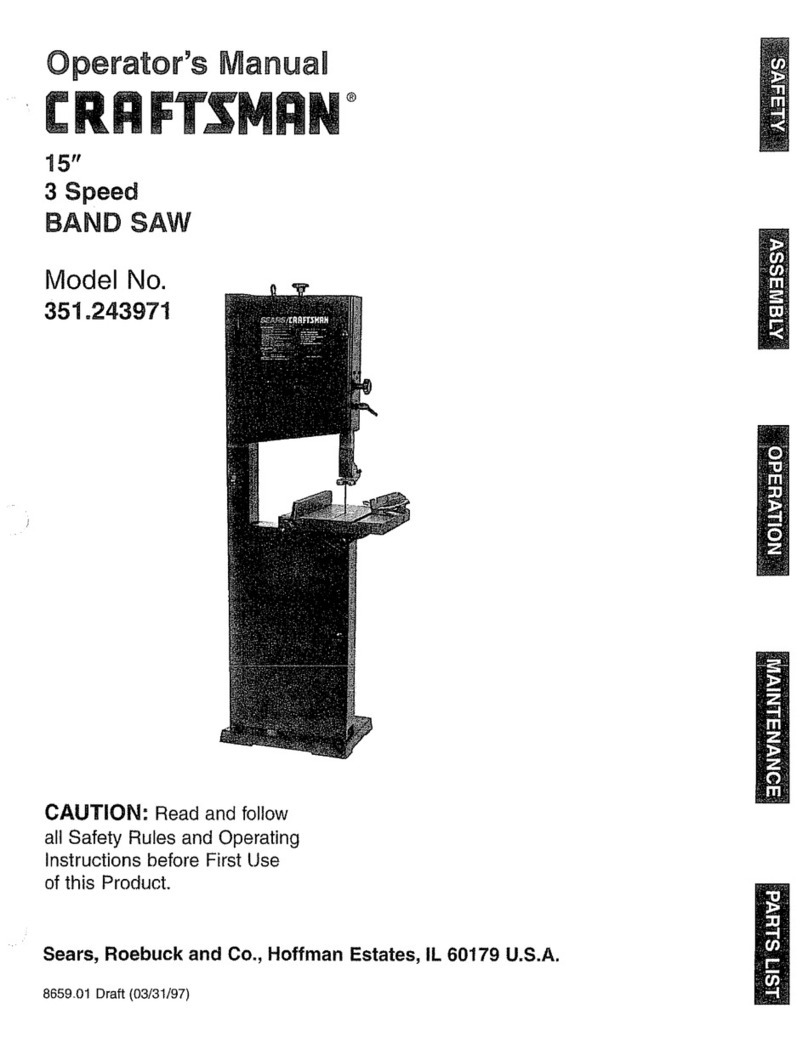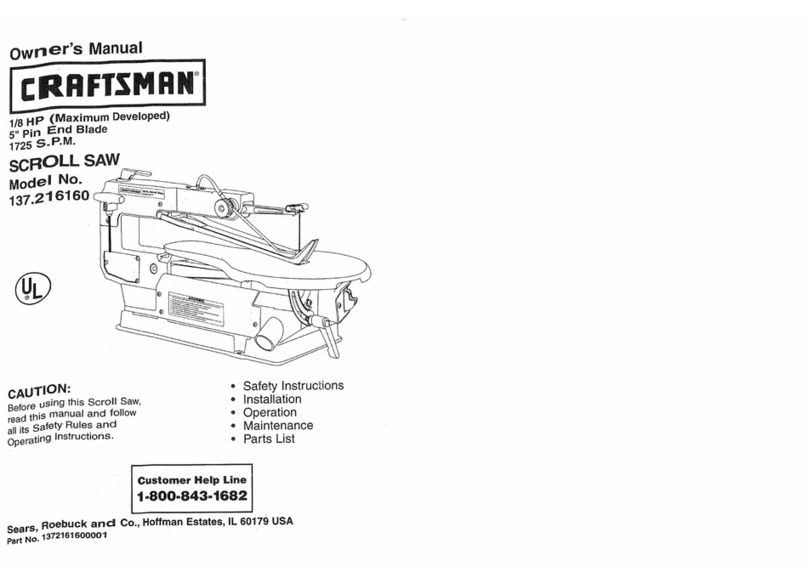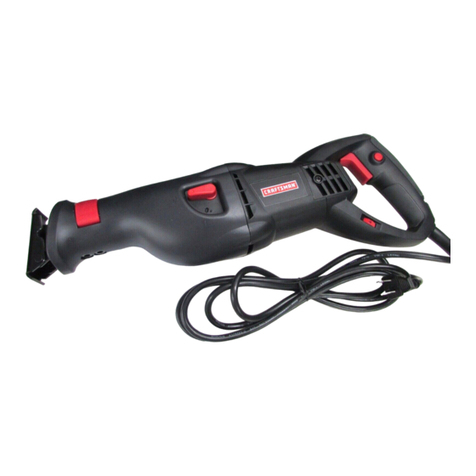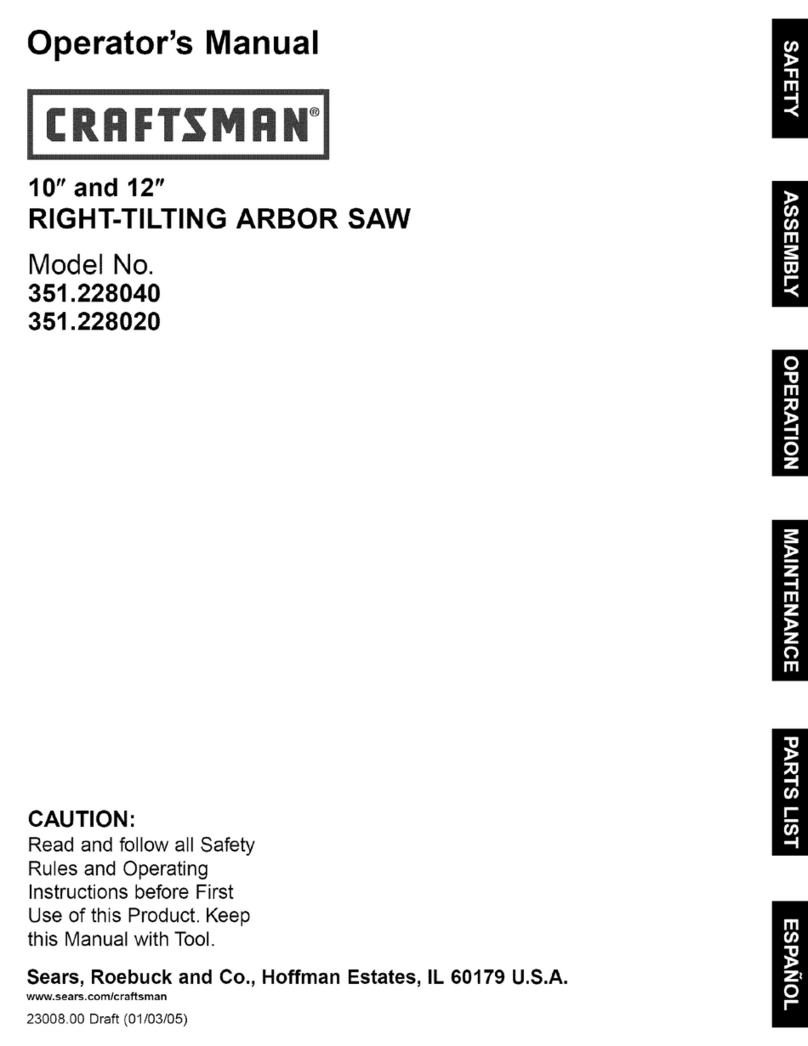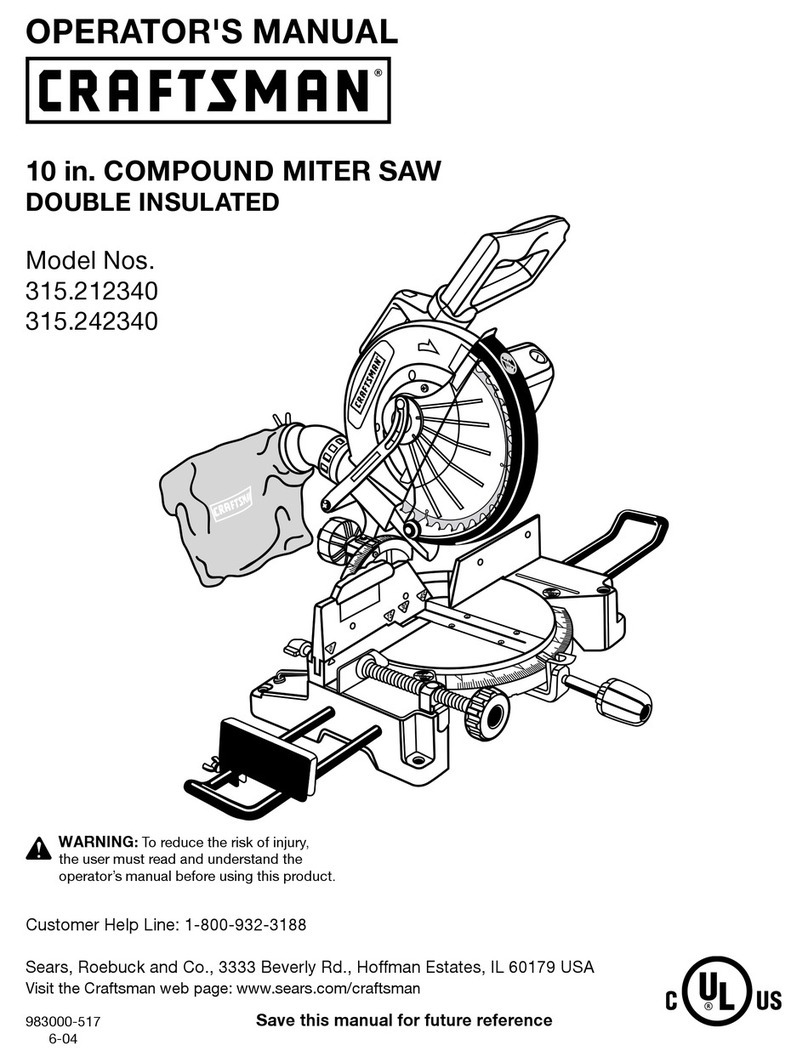
FULL ONE YEAR WARRANTY ON CRAFTSMAN INDUSTRIAL 7-1/4"WORM DRIVE SAW
If this CRAFTSMAN INDUSTRIAL 7-1/4" WORM DRIVE SAW fails due to a defect in material or workmanship within
one year from the date of purchase, Sears will repair it free of charge. Thiswarranw applies onlywhiie this product is in
use in the United States. WARRANTY SERVICE IS AVAILABLE BY SIMPLY RETURNING THE TOOL TO THE
NEAREST SEARS STORE OR SERVICE CENTER THROUGHOUT THE UNITED STATES.
This warranty gives you specific legal rights and you may also have other rights which vary from state to state.
SEARS, ROEBUCK AND CO., DEPT. 698/'731A SEARS TOWER, CHICAGO, IL 60684
GENERAL SAFETY RULES
WARNING! "READ ALL INSTRUCTIONS" Failure to follow the SAFETY RULES
listed BELOW, and other basic precautions, may result in serious personal injury.
1. KEEP WORK AREA CLEAN. Cluttered areas and
benches invite accidents.
2. AVOID DANGEROUS ENVIRONMENT. Don't use
power tools in damp or wet locations. Keep work area
well lit. Do not expose power tools to rain. Do not use
tool in presence of flammable liquids or gases.
3. KEEP CHILDREN AWAY. Do not let visitors contact
tool or extension cord. All visitors should be kept away
from work area,
4. STORE IDLE TOOLS. When not in use, tools should be
stored in dry, high or locked up place-out of the reach
of children.
5. DON'T FORCE TOOL. It will do the job better and safer
at the rate for which it was designed.
6o USE THE RIGHT TOOL. Don't force small tool or
attachment to do the job of a heavy-duty tool. Don't
use tool for purpose not intended-for example; don't
use circular saw for cutting tree limbs or logs.
7. DRESS PROPERLY. Do not wear loose clothing or
jewelry. They can be caught in moving parts. Rubber
gloves and non-skid footwear are recommended when
working outdoors. Wear protective hair covering to
contain long hair.
8. USE SAFETY GLASSES. Also face or dust mask if
cutting operation is dusty.
9. DON'T ABUSE CORD. Never carry tool by cord or yank
it to disconnect from receptacle. Keep cord from heat,
oil, and sharp edges.
10. SECURE WORK. Use clamps or a vise to hold work.
It's safer than using your hand and it frees both hands
to operate tool.
11. DON'T OVERREACH. Keep proper footing and balance
at all times.
12. MAINTAIN TOOLS WITH CARE. Keep tools sharp and
clean for better and safer performance. Follow instruc-
tions for lubricating and changing accessories. Inspect
"SAVE THESE INSTRUCTIONS"
tool cords periodically and if damaged, have repaired by
authorized service facility. Keep handles dry, clean, and
free from oil and grease.
13. DISCONNECT TOOLSI W|;en not in use; before servi-
cing; when changing blades, bits, cutters, etc.
14. REMOVE ADJUSTING KEYS AND WRENCHES. Form
habit of checking to see that keys and adjusting wrenches
are removed from tool before turning it on.
15. AVOID ACCIDENTAL STARTING. Don't carry plugged
in tool with finger on switch. Be sure switch is OFF
when plugged in.
16. OUTDOOR USE EXTENSION CORDS. W-hen tool is
used outdoors, use only extension cords suitable for use
outdoors and so marked with suffix W-A.
17. AVOID GASEOUS AREAS: Do not operate portable
electric tools in gaseous or explosive atmospheres.
Motors in these tools normally spark, and the sparks
might ignite fumes.
18. DO NOT ALTER OR MISUSE TOOL. These tools are
precision built. Any alteration or modification not
specified is misuse and may result in a dangerous
,condition.
19. GUARD AGAINST ELECTRIC SHOCK. Prevent body
contact with grounded surfaces. For example; pipes,
radiators, ranges, refrigerator enclosures.
20. STAY ALERT. Watch what you are doing. Use common
sense. Do not operate tool when you are tired.
21, CHECK DAMAGED PARTS, Before further use of the
tool, a guard or other part that is damaged should be
carefully checked to determine that it will operate
properly and perform its intended function. Check for
alignment of moving parts, binding of moving parts,
mounting, and any other conditions that may affect its
operation. A guard or other part that is damaged should
be properly repaired or replaced by an authorized service
center unless otherwise indicated elsewhere in this
manual, Have defective switches replaced by authorized
center. Do not use tool if switch does not turn it on and
off.
SPECIFIC PRECAUTIONS FOR CIRCULAR SAWS
•Disconnect plug from power supply before changing blades,
making cutting depth or cutting angle adjustments, inspect-
ing, cleaning or when saw is not being used.
• CAUTION: Do not use dull or damaged blades.
• DANGER: Keep hands away from cutting area and blades.
•Keep blade guards in place and in working order.
•Never clamp or tie the lower guard into the open position.
•Raise the lower guard only with the Lower Guard Lift
Lever.
•Do not run the saw while carrying it at your side.
•_Check lower guard for proper closing before
each use. If saw is accidently dropped, lower guard may be
bent. Raise the lower guard with the Lower Guard Lift
Lever to make sure it moves freely and does not tQuch the
blade in all angles and depths of cut. Do not operate saw if
lower guard does not function properly.
• Secure wood before sawing; never hold pieces for cutting
in your hand or across your legs.
• Keep second hand on motor housing not near blade. Do
not attempt to remove cut material when blade is moving.
•Make certain depth and bevel adjusting locking levers are
tight and secure before making cut.
• Always observe that the lower guard is in the blade covering
position before placing saw down on bench or floor.
• When operating the saw. keep the cord away from the cut-
ting area and position it so that it will not be caught on the
work piece during the cutting operation.
• _'_It is important to support the work properly
and to hold the saw firmly to prevent loss of control which
could cause personal injury. Figures on pages 4 and 5
illustrate typical hand support of the saw".
Be aware that kickback can occur at any time.
Page 2
